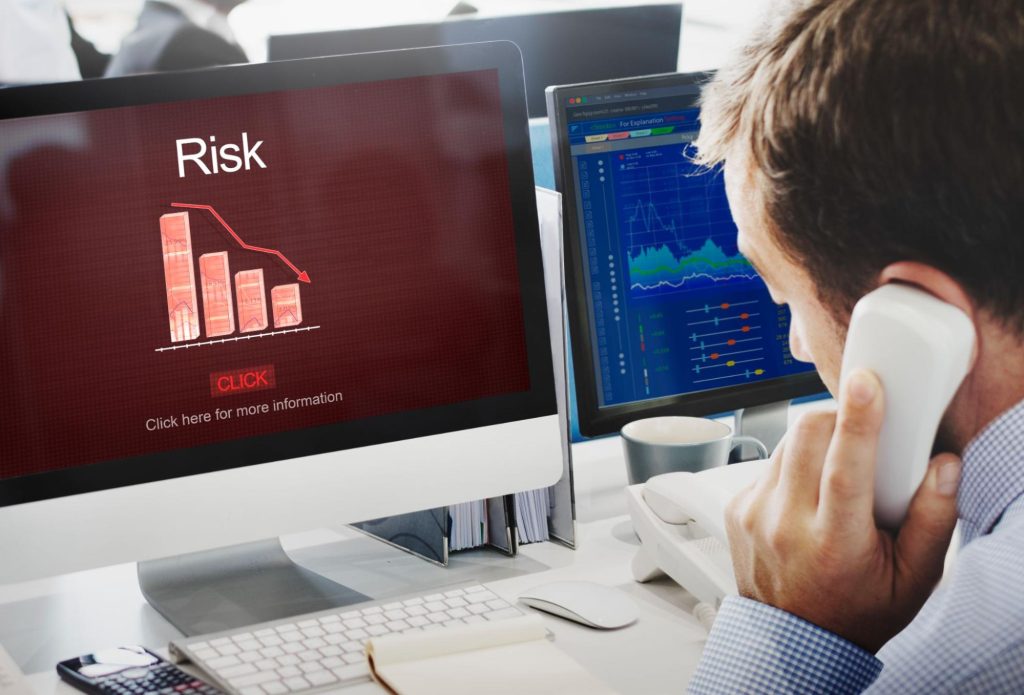Enterprise Risk Management (ERM)

What is Enterprise Risk Management (ERM)?
10/28/2025 3:30 PM
In today’s modern world, the business environment is constantly evolving, and uncertainty is now unavoidable. Cyber threats, regulatory shifts, supply chain disruptions, and global crises—more organizations face risks that impact their performance and reputation.
That is why “Enterprise Risk Management” or ERM comes in. It is a planned, systematic, and proactive approach to recognizing, assessing, and addressing risks before they occur.
ERM is much more than compliance. It is a strategic framework for anticipating potential challenges, allocating resources thoughtfully, and maintaining operational resilience.
In fact, a well-implemented enterprise risk management program impacts every risk area, providing decision-makers with the necessary information to make informed decisions based on data, thereby better protecting assets and fostering stakeholder trust.
These days, modern businesses are increasingly turning to risk management software solutions compared to the past.
The software automates risk assessments, tracks performance indicators, and generates real-time insights that help inform executives in making decisions. ERM’s integration of technology shifts traditional risk monitoring into a dynamic, future-looking system.
One disruptive event can change everything; therefore, enterprise risk management can no longer be an option—it is a necessity. Enterprise risk management (ERM) enables companies to prepare for various uncertainties, whether through enterprise compliance risk management, strategic planning, or training for team members.
Understanding the Enterprise Risk Management (ERM)
In its basic form, Enterprise Risk Management (ERM) is a systematic, organization-wide approach to identifying, assessing, and managing events that could pose threats or create opportunities for an organization in relation to its objectives.
The enterprise risk management definition is a crucial key guide; risk is not to be avoided, but rather understood beforehand, so that businesses can effectively manage their strategies.
ERM, in accordance with the established industry frameworks, is intended to establish a predetermined, uniform method for organizations to manage risk. Connecting risk management with strategic decision-making enables leaders to allocate resources optimally.
An enterprise risk management program evaluates all facets of a business, from finance and production through to cybersecurity and reputation management, rather than performing singular and isolated risk assessments that focus on one single department.
A comprehensive enterprise risk management policy ensures that alignment is achieved with the broader organizational objectives by getting all departments on board. This policy outlines methodologies, risk appetite, responsibilities, and reporting structures that will govern risk uniformly across the entire enterprise.
For example, an organization would typically include in its policy its acceptance level of risk for loss of money or damage to data sets, thus ensuring managers take consistent action when matters arise. Such guidelines are the backbone of a mature ERM strategy, enabling organizations to convert uncertainties into measurable opportunities.
How Technology Elevates the Enterprise Risk Management Process
Manual risk tracking has become inefficient in modern times. Organizations must rely on enterprise risk management software that consolidates risk data, checks performance indicators, and produces actionable insights in real-time. Such systems automate the generation of reports and ensure compliance with industry regulations.
Featuring predictive analytics and customized dashboards, this ERM software gives a 360-degree view of the entire risk landscape within the organization for the leaders. Enterprise risk management tools enable enterprises to assess how each risk impacts the others and deploy rapid interventions.
For example, when a manufacturing firm implements enterprise risk management software, it can identify supply chain vulnerabilities well in advance. In contrast, a financial institution will analyze its exposure to market volatility. In both situations, the technology increases visibility and response time, two factors that are fundamental to sustainable performance.
The Role of Enterprise Risk Management Solutions Companies
It takes technology and expertise to build and manage a practical ERM framework, which is why companies like Jadian play a significant role in enterprise risk management solutions.
- ERM solutions companies typically design, implement, and even modify ERM platforms to suit the specific needs of each organization.
- Jadian, an ERM solutions company, offers a comprehensive risk management approach that combines innovative software with strategic consulting to help organizations become compliant and resilient in the future.
- ERM solutions companies provide end-to-end approaches to risk management, helping organizations transition from a stagnant, reactive approach to a proactive governance style, enabling them to identify vulnerabilities before they escalate to a crisis level.
Additionally, an organization’s trusted partner solutions seamlessly integrate enterprise compliance risk management into every workflow. Undoubtedly, this integration will minimize your business’s regulatory breaches and provide a consistent method for external and internal audits through increased transparency.
The Role of People in Enterprise Risk Management
A training system developed for risk management at the enterprise level will equip employees with the knowledge and skills to identify and manage risks at all levels within an organization. Here’s what you need to know.
- People Drive Successful ERM Implementation:
Technology introduces automated practices and insights, but trained personnel are the ones who understand the data, interpret the frameworks, and apply the adequate response methods to help them address possible threats.
- Certification Ensures Consistency:
The certification in Enterprise Risk Management validates expertise in standardizing the assessment and management of risks across various teams and departments.
- Training Strengthens Awareness:
Frequent training on enterprise risk management usually instills confidence in employees and equips them to identify risks early, before they develop into full-blown issues.
- Human Involvement Sustains Resilience:
Highly competent teams of workers will deliberately choose to create a culture of compliance, stability, and business growth by engaging all team members in active input that generates beneficial outcomes.
Why Do Businesses Need an Enterprise Risk Management Program?
A practical enterprise risk management program enables businesses to identify, assess, and mitigate risks before they escalate into severe issues.
It promotes operational resilience, regulatory compliance, and informed decision-making, allowing organizations to protect their assets, sustain growth, and remain competitive in an unpredictable business environment over the long term. Here’s what you need to know more.
1. Proactive Protection Against Business Threats
In today’s world, risks appear on all sides, whether from cybersecurity threats, economic downturns, data breach events, or environmental challenges. The enterprise risk management program provides a framework for identifying and addressing issues before they escalate into crises.
- Prevention Over Reaction: Rather than responding to an incident after damage has been done, ERM emphasizes that an organization should look into predicting risks early and preparing for them.
- Improved Visibility: Companies can review risks across their departments with the aid of modern enterprise risk management tools and software, ensuring that no threat goes unnoticed.
- Stronger Governance: Enterprise risk management is often implemented through various policies that promote an enterprise culture of accountability and compliance within an organization.
2. Enhancing Strategic Decision-Making
Enterprise risk management software allows corporate leaders to make decisions based on facts and data instead of on guesswork and assumptions.
- Data-informed Leadership: It requires considering risk factors, such as lost revenue, recovery time, and lost traffic, to accurately predict the impact.
- Cross-departmental Alignment: With Efficient Risk Management (ERM), finance, operations, and compliance are aligned with corporate objectives.
- Business Agility: By anticipating potential risks, organizations can adjust their strategies promptly, from the early stages, to stay relevant and compliant.
3. Ensuring Compliance and Reducing Regulatory Risk
With stricter regulations in place, compliance becomes essential for sustainable development. Enterprise compliance risk management, at the enterprise level, enables companies to comply with industry laws and standards while minimizing disruptions to day-to-day operations.
- Centralized Compliance Monitoring: A tracking of legal requirement obligations is conducted across various jurisdictions to reduce the risk of compliance oversight failures.
- Automated Reporting: Audits are made more comprehensive by the activities and sometimes even automated to identify associated loopholes.
- Consistent Enforcement: ERM ensures uniform application of compliance procedures across all departments.
By partnering with an enterprise risk management solutions firm such as Jadian, compliance is assured and enhanced through technology and expertise.
4. Safeguarding Reputation and Stakeholder Trust
Among the numerous valuable assets that an organization possesses, its reputation stands at the highest level. A minor or major mistake could easily lead to data leaks, financial loss, or public scrutiny against your company.
An enterprise risk management program helps shield the organization against such damages to its credibility by ensuring transparency, preparedness, and ethical governance.
- Crisis Readiness: The ERM program prepares an organization to deal promptly and effectively with unexpected incidents.
- Transparency: Stakeholders are provided with reports and reassured through the monitoring and assessment of risks associated with business practices.
- Investor Confidence: An enterprise risk management policy provides a platform that can help mitigate uncertainties while maintaining all the good aspects.
5. Supporting Business Growth and Innovation
Risk management does not prevent progress; it enables progress. It reduces uncertainties, allowing the company to explore new markets and innovations with greater assurance.
- Informed Risk-taking: ERM defines which risks to pursue based on the potential benefits they offer.
- Resource Optimization: Enable business organizations to align resources effectively through a unified enterprise risk management program, minimizing waste by accurately assessing and mitigating risks.
- Scalability: ERM ensures that compliance structures and governance evolve in accordance with the company’s level of expansion.
How Enterprise Risk Management Software Supports Organizations
The modern enterprise risk management software enables organizations to identify, assess, and, with evidence-based management systems, automate their risk management processes in real-time with integrated compliance systems.
1. Streamlining Risk Identification and Assessment
A primary purpose of any enterprise risk management program is to standardize the identification and evaluation of risk across all business functions. Enterprise risk management software and advanced tools will simplify the process by transforming the manual tracking experience into an automated and data-driven one.
Jadian provides innovative ERM solutions to integrate risks across enterprises and the overall ERM risk, with provisions for ensuring that all risks are measured, managed, or mitigated.
2. Improving Collaboration and Decision-Making
Enterprise risk management software facilitates effective communication and collaboration by uniting employees, managers, and executives on a single, unified platform.
- Unified communication: Departments share insights and updates in real-time, ensuring quick action.
- Informed leadership: Visualized reports are submitted to the executives for better decision-making in the boardroom.
- Policy consistency: There is a clear risk management policy for each department, creating uniformity in governance standards across the board.
When individuals and processes come together as one, an organization can create a culture of openness, where all employees participate in collectively discovering and designing solutions to risks.
3. Enhancing Compliance and Governance
Modern organizations are facing numerous increasing regulatory requirements. In this regard, enterprise compliance risk management is a crucial step in ensuring that all company business processes align with legal boundaries and internal standards.
With a trusted enterprise risk management solutions provider like Jadian, maintaining ongoing compliance becomes possible through systems that adapt to the growth of your corporate culture and the evolving legal environment.
4. Predictive Analytics and Real-Time Monitoring
Artificial intelligence-enabled enterprise risk management systems enable organizations to work proactively, allowing them to manage problems through predictive control and informed decision-making.
- The systems run 24/7 to capture anomalies and rectify them.
- Predictive models aimed to predict risk in terms of its potential impact on financial and operational outcomes.
- Enabling automated notifications results in a faster response time in the event of a disruption.
This data-driven approach to an integrated enterprise risk management program helps identify not only pre-existing risks but also potential challenges.
5. Integration with Business Systems and Employee Growth
An efficient system of enterprise risk management would integrate with other enterprise systems and human expertise, rather than operate in isolation.
- Professional advancement: The Enterprise Risk Management certification requires risk professionals to adhere to global best practices.
- Skill development: Through enterprise risk management training, teams will learn how to maximize their tools and data insights.
- Connectivity: ERM software shares information across three key systems: finance, HR, and operations.
Organizations empower employees to address evolving threats with confidence by integrating technology into team member development, which in turn strengthens their internal risk culture.
6. The Jadian Advantage
With great care, Jadian designs intelligent systems that can be customized according to specific requirements, integrating technology, compliance, and human expertise, and providing them as a leading enterprise risk management solutions company.
- Jadian offers enterprise risk management software that can contribute to both compliance and performance monitoring.
- Each client can develop a solution around its specific ERM policy and operational needs.
- Practical training and consultancy guide teams in maximizing the full potential of the platform.
Jadian enables companies to manage risks proactively through automation, analytics, and continuous improvement; their joint efforts are contributing to the creation of a more resilient future.
Fun Fact
Investors perceive companies that adopt Enterprise Risk Management (ERM) as safe investments, which are able to see the future and align themselves strategically.
How to Build an Enterprise Risk Management Policy
A good enterprise risk management policy provides a foundation for uniform identification, evaluation, and control of risks across an entity. It ensures the alignment of strategy, compliance, and operations, enabling leaders to make informed decisions within a coherent, open, and proactive risk management culture. Here’s what you need to know.
Defining the Purpose and Scope:
- The purpose of this document is for the organization to consider first defining the expected outcomes of its enterprise risk management program. The policy serves as an operational and directional tool for all risk identification, reporting, and response activities across the organization.
- An effective enterprise risk management policy promotes a clear set of expectations and ensures that each team member understands their responsibilities in support of business resilience.
Establishing Roles and Responsibilities:
- A crucial factor is to be clearly accountable for any risk management program if it is to be successful.
- If roles are defined clearly from the outset, it will then create a presumption that risk management is a responsibility in which everyone has their part to play.
- A clear division of duties fosters a culture of transparency, where everyone in the organization understands how their actions mitigate risk.
Developing the Framework and Methodology:
- For a policy to be successful, it has to be backed by risk identification, assessment, and control processes.
- By utilizing enterprise risk management software and data-driven tools, organizations can automate workflows, ensuring consistency and continuous improvement.
Integrating Compliance and Regulatory Controls:
- Through effective enterprise compliance risk management, organizations can meet regulatory requirements and comply with industry standards by incorporating compliance into their policies.
- Partnering with an enterprise risk management solutions company, such as Jadian, also helps to maintain policies that are relevant as the compliance landscape shifts and facilitates long-term resilience for a company.
Training, Certification, and Policy Implementation:
- Training in enterprise risk management aspects, along with certification, will assist the organization by providing everyone involved in the company with a consistent message regarding its introduction and its significance.
- A company that invests in training and certification strengthens its compliance culture and enhances team member confidence in making informed risk management decisions.
⭐TIP
For effective practice over time, firms using ERM should receive feedback from every employee. Each individual could offer a unique perspective on what might not work or what could be improved.
Training and Certification in Enterprise Risk Management
The organization needs to conduct continuous training on enterprise risk management and offer accredited enterprise risk management certification programs to build a risk-aware workforce.
They prepare professionals for the increasingly complex challenges of risk management while ensuring uniformity, compliance, and resilience throughout the entire organization.
Why ERM Training Matters
Training in enterprise risk management enables an organization to have a more proactive and informed workforce. Well-trained employees can identify risks early, report them to the appropriate parties, and make decisions that align with the company’s overall risk strategy.
- Skill Development: Jadian provides hands-on training that develops teams in the use of the firm’s enterprise risk management software and analytics tools.
- Consistency Across Departments: Jadian ensures the enterprise risk management policy is well understood uniformly, thus encouraging collaboration and accountability.
- Proactive Culture: It develops confidence among employees to identify, report, and address risks in their rightful context, thereby minimizing exposure and vulnerabilities to the organization.
ERM awareness training programs by Jadian cultivate a culture of awareness within companies, where every team member contributes to the organization’s overall resilience.
The Value of Certification
Enterprise risk management certification can enhance an individual’s professional credibility and serve to strengthen an organization’s governance framework.
- Professional recognition
- Career advancement
- Organizational consistency
Through Jadian, they assist organizations in ensuring that their workforce remains compliant, confident, and capable of dealing with changing risks by providing end-to-end support in training, preparation, and certification.
Integrating ERM Training Into Company Culture
The most meaningful training is integrated into everyday activities. Jadian is working to help organizations define and implement continuous learning aligned with their enterprise risk management programs and compliance requirements.
- Continuous learning modules: Jadian designed regular workshops.
- Performance-linked programs: Risk management integrated into employee evaluation.
- Tech-enabled learning: Enterprise risk management software to be used for simulations and training based on data.
Jadian incorporates training into the everyday operations of businesses, which also enables people trained within companies to adapt to uncertain risks easily.
Conclusion
Today, risk management activities are critical for the long-term existence of an organization.
Using a solid enterprise risk management program and software, organizations can identify, assess, and mitigate risks to the organization’s operations before they become disruptive. With the right tools and knowledge, risks are transformed into opportunities for a competitive edge.
Transforming the face of enterprise risk management solutions, Jadian utilizes the latest technology, backed by expertise, to help organizations fortify their compliance, governance, and decision-making.
They offer tailored training solutions for enterprise risk management, guidance for enterprise risk management certification, and the integration of intelligent enterprise risk management tools. With extensive expertise in enterprise compliance risk management and policy development, Jadian enables companies to proceed in full confidence and with complete assurance in any environment.
Ready to rise in resilience for your organization? Contact Jadian today for intelligent, scalable enterprise risk management software to ensure visibility, compliance, and stability in the business.
FAQs
1. What makes Jadian’s enterprise risk management software unique?
Jadian provides real-time analytics, automation, compliance, and reporting systems.
2. Can Jadian help with enterprise risk management training and certification?
Yes, Jadian offers practical training and connects clients to accredited certification programs.
3. Does Jadian assist in building an enterprise risk management policy?
Yes, Jadian could customize and implement ERM policies with your organization’s goals and regulatory requirements in mind.




